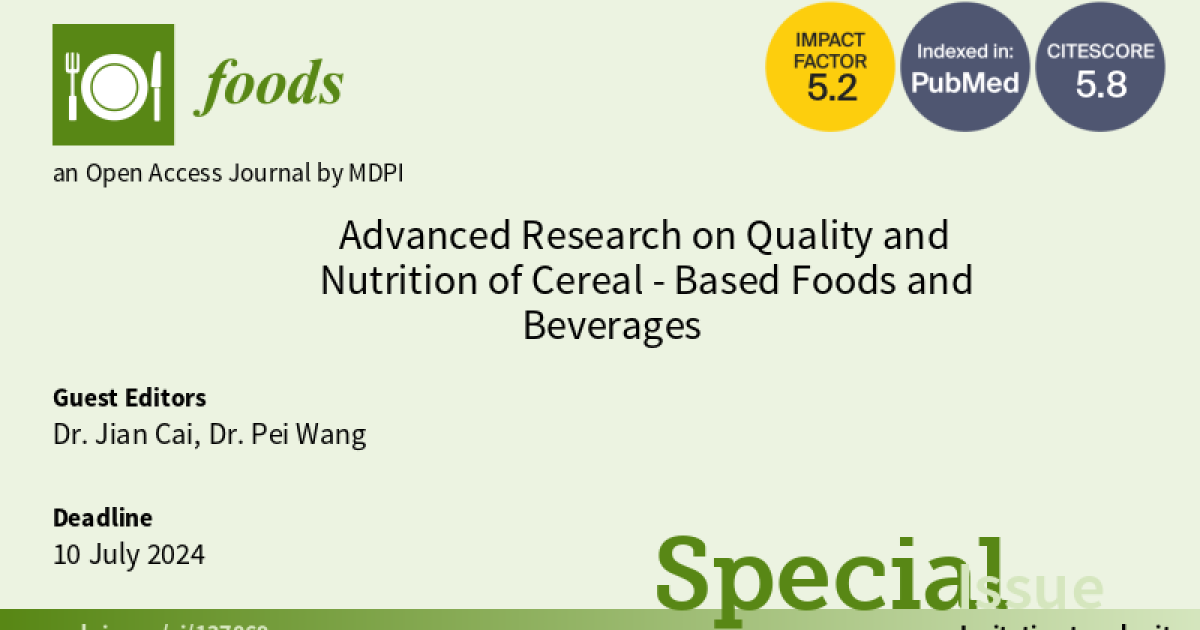Advanced Research on Quality and Nutrition of Cereal-Based Foods and Beverages
A special issue of Foods (ISSN 2304-8158). This special issue belongs to the section "Grain".
Deadline for manuscript submissions: 10 July 2024 | Viewed by 13820

Special Issue Editors
Interests: wheat cultivation; wheat quality; wheat processing; product development
Interests: cereal food processing; multiple component interactions; functional cereal food development
Special Issues, Collections and Topics in MDPI journals
Special Issue Information
Dear Colleagues,
Cereals are the predominant ingredient in the manufacturing staple foods. The exploitation of cereals-based food of high quality and nutrition are pivotal for the national health. The majority of refined cereal products have low nutritional value since they are constitued of high levels of carbohydrates and fat. The balance between the quality and nutrition of cereal-based food should be comprehensively considered by incoporating the functional cereal ingredent as well as introducing the innovative processing techqinue. Moreover, understanding the interactions of multiple cereal components at the molecular level during processing and digestion significantly advances the developing principle of cereal-based foods and allows for regulating the quality and nutrition of cereal-based foods.
Thus, the aim of the current Special Issue is to collect recent advances on the quality and nutrition of cereal-based foods. Original manuscripts, including full-length articles, short communications, and mini-reviews, are all welcome. All manuscripts will be peer-reviewed before their acceptance for publication.
Dr. Jian Cai
Dr. Pei Wang
Guest Editors
Manuscript Submission Information
Manuscripts should be submitted online at www.mdpi.com by registering and logging in to this website. Once you are registered, click here to go to the submission form. Manuscripts can be submitted until the deadline. All submissions that pass pre-check are peer-reviewed. Accepted papers will be published continuously in the journal (as soon as accepted) and will be listed together on the special issue website. Research articles, review articles as well as short communications are invited. For planned papers, a title and short abstract (about 100 words) can be sent to the Editorial Office for announcement on this website.
Submitted manuscripts should not have been published previously, nor be under consideration for publication elsewhere (except conference proceedings papers). All manuscripts are thoroughly refereed through a single-blind peer-review process. A guide for authors and other relevant information for submission of manuscripts is available on the Instructions for Authors page. Foods is an international peer-reviewed open access semimonthly journal published by MDPI.
Please visit the Instructions for Authors page before submitting a manuscript. The Article Processing Charge (APC) for publication in this open access journal is 2900 CHF (Swiss Francs). Submitted papers should be well formatted and use good English. Authors may use MDPI's English editing service prior to publication or during author revisions.
Keywords
- cereal-based food
- quality and nutrition control
- functional cereal ingredient
- innovative processing technology
- cereal components






